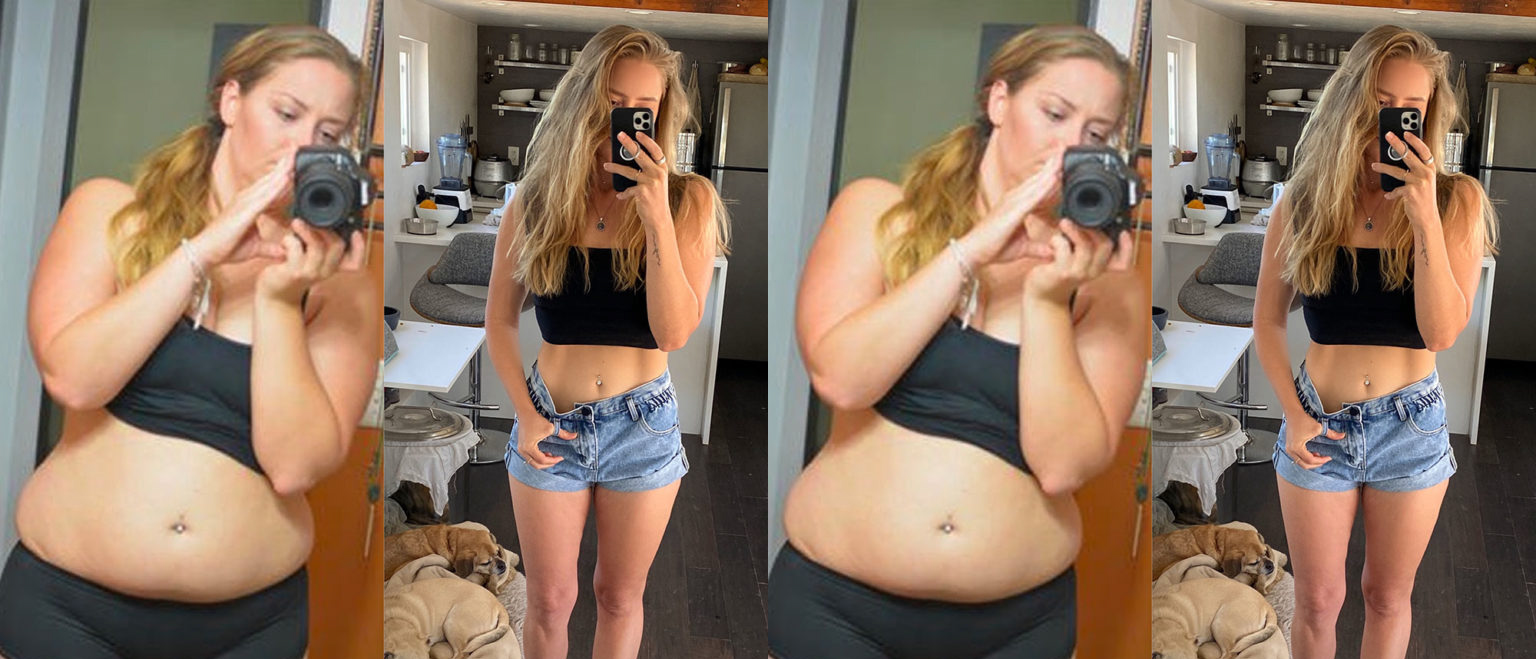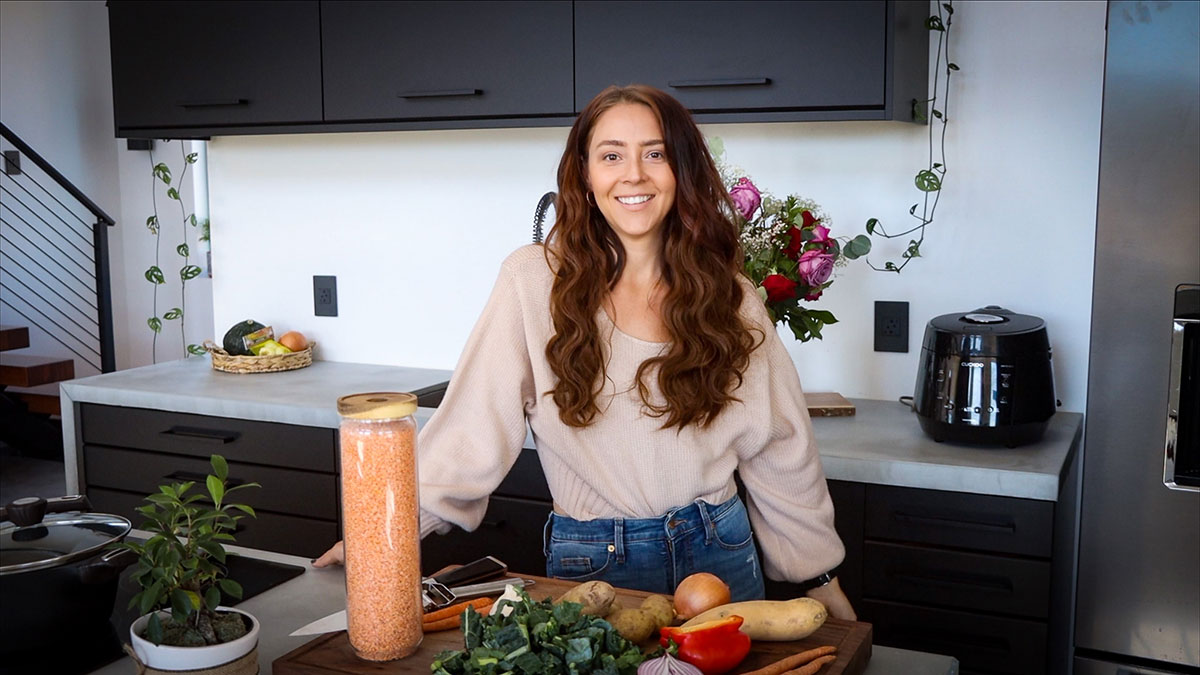


Do You Need to Exercise to Lose Weight?

While exercise can play a role in weight loss, it’s not the sole factor. Weight loss primarily depends on creating a calorie deficit, which means consuming fewer calories than you expend.
Following a whole-food, plant-based diet that is low in calorie density is the primary driver of your weight loss. This allows you to eat a large volume of food, feel nourished and satisfied, and maintain a calorie deficit without much mental effort.
For most people, this approach is sufficient, but some individuals may find it helpful to incorporate exercise to expedite the process or shed those last 10-15 pounds.
I always recommend making small changes that you can gradually build into lifelong habits. If you attempt to overhaul your entire diet, exercise routine, and lifestyle all at once, it can become unsustainable and overwhelming. Start by getting your diet right, and then slowly introduce exercise using the guidance below, ensuring that your journey is one of continuous growth.
First, let’s explore how exercise benefits not only weight loss but also overall health:
Weight Management: Exercise aids in controlling body weight by burning calories and preserving muscle mass, which is vital for a healthy metabolism.
Cardiovascular Health: Regular physical activity enhances heart health by reducing the risk of heart disease, lowering blood pressure, and improving cholesterol levels. It also strengthens the heart muscle.
Muscle and Bone Health: Exercise builds and maintains muscle mass, essential for overall strength and mobility. Weight-bearing activities such as walking, running, and resistance training also improve bone density, reducing the risk of osteoporosis.
Metabolic Health: Exercise helps regulate blood sugar levels and can lower the risk of type 2 diabetes by improving insulin sensitivity.
Mental Health: Physical activity has a positive impact on mental health by reducing symptoms of depression and anxiety, enhancing mood, and reducing stress.
Cognitive Function: Regular exercise can enhance cognitive function, including memory, attention, and problem-solving skills. It may also lower the risk of cognitive decline as people age.
Quality of Sleep: Exercise can promote better sleep, helping you fall asleep faster and enjoy deeper, more restorative rest, leading to increased overall energy levels during the day.
Immune System Support: Moderate, regular exercise can boost the immune system, making it more effective at combating infections and illnesses.
Longevity: Studies suggest that regular exercise is associated with a longer lifespan and a reduced risk of premature death.
Now that we’ve explored the benefits of incorporating exercise into your routine, let’s guide you through building a workout plan that not only aids in effective weight loss but also makes fitness an enjoyable and lasting part of your lifestyle:
Step 1: Set Clear Goals
Before creating your workout plan, establish clear and realistic goals. Ask yourself:
- How much weight do you want to lose?
- What is your target body composition?
- What are your timeframes for achieving these goals?
- Having a clear understanding of your objectives will help tailor your workout plan to meet your specific needs. For example, if your goal is solely weight loss, incorporating daily walks can be effective. If you seek to build muscle and reshape your body, weight training and other exercises will be necessary. Document your goals in a notebook as a healthy reminder.
Step 2: Choose Enjoyable Activities
Sustainable weight loss relies on consistency, and enjoyment plays a crucial role in consistency. Instead of forcing yourself into exercises you dislike, explore various fitness activities to find what brings you joy. Whether it’s dancing, cycling, hiking, or swimming, the options are endless. The more you enjoy your workouts, the more likely you are to stick with them.
Personally, I find joy in walking and hiking, allowing me to connect with nature, and weight training provides a sense of achievement. This is why I balance both in my routine. Walking serves as my “me time” to clear my head and get fresh air, while weight training challenges me physically and mentally. Maintaining a healthy balance between activities is essential.
Step 3: Combine Cardiovascular and Strength Training
An effective weight loss workout plan should include a balance of cardiovascular (cardio) and strength training exercises. Cardio workouts like running, cycling, or dancing burn calories, while strength training builds lean muscle mass, boosting your metabolic rate even during rest. Aim for a combination of both to maximize weight loss and health benefits.
Remember that you don’t need weights to build muscle; calisthenics and yoga can also be effective in maintaining and increasing muscle mass while improving flexibility as you age.
Step 4: Plan Your Weekly Schedule
Structure your workout plan around your weekly schedule, considering factors such as work commitments, family responsibilities, and personal preferences. A typical schedule might include:
- Cardiovascular exercises 3-5 times a week for 30-60 minutes per session.
- Strength training or yoga 2-3 times a week, targeting different muscle groups.
- 1-2 rest days for recovery.
I personally prioritize a daily 30-minute walk, as it helps me maintain my sanity while working from home. Additionally, I engage in weight training 3-4 times a week and incorporate brief cardio sessions at the gym before lifting to warm up. Build a plan that aligns with your lifestyle and incorporates activities you enjoy.
Step 5: Embrace Progression and Variety
To keep your workouts effective and engaging, introduce progression and variety. Gradually increase the intensity or duration of your workouts as your fitness improves. Additionally, change up your exercises or explore new fitness classes to maintain interest.
Step 6: Seek Accountability and Support
Having an accountability partner or support system can be immensely beneficial. Share your fitness goals with a friend, join a workout group, or participate in classes. In my Guided Meal Plan community, we often engage in step challenges to motivate each other. Knowing that someone is counting on you can help you stay consistent and make exercise more enjoyable.
You can also invest in a fitness tracker, such as an Oura ring, to monitor your activity and motivate yourself to meet daily step goals, especially if you work from home.
Step 7: Listen to Your Body
Listening to your body is essential for sustainability. Rest when needed, especially if you feel fatigued or sore. Overtraining can lead to burnout and injury, potentially derailing your weight loss journey.
Step 8: Track Your Progress
Document your progress to stay motivated and informed. Keep a workout journal, use fitness apps, or take regular photos to visually track your transformation. Celebrate small victories along the way to maintain motivation.
Step 9: Consult a Professional
If you’re unsure where to begin or how to create a personalized workout plan, consider consulting a fitness professional or personal trainer. They can assist in designing a plan tailored to your goals, provide guidance on proper form and technique, and ensure your safety during workouts.
Conclusion
While the kitchen remains the primary driver of results in your weight loss journey, as emphasized in my 28-Day Guided Meal Plan course, a sustainable and enjoyable workout plan can enhance your results and leave you feeling as great as you look. Tailor a plan that combines consistency, variety, and a deep appreciation for the activities you engage in.
By setting clear goals, choosing activities you love, and striking the right balance between cardio and strength training, you can create a plan that not only helps you shed pounds but also makes fitness an integral and enjoyable part of your life.
Remember, it’s not just about the destination; it’s about the journey toward a healthier and happier you.
Related posts:


